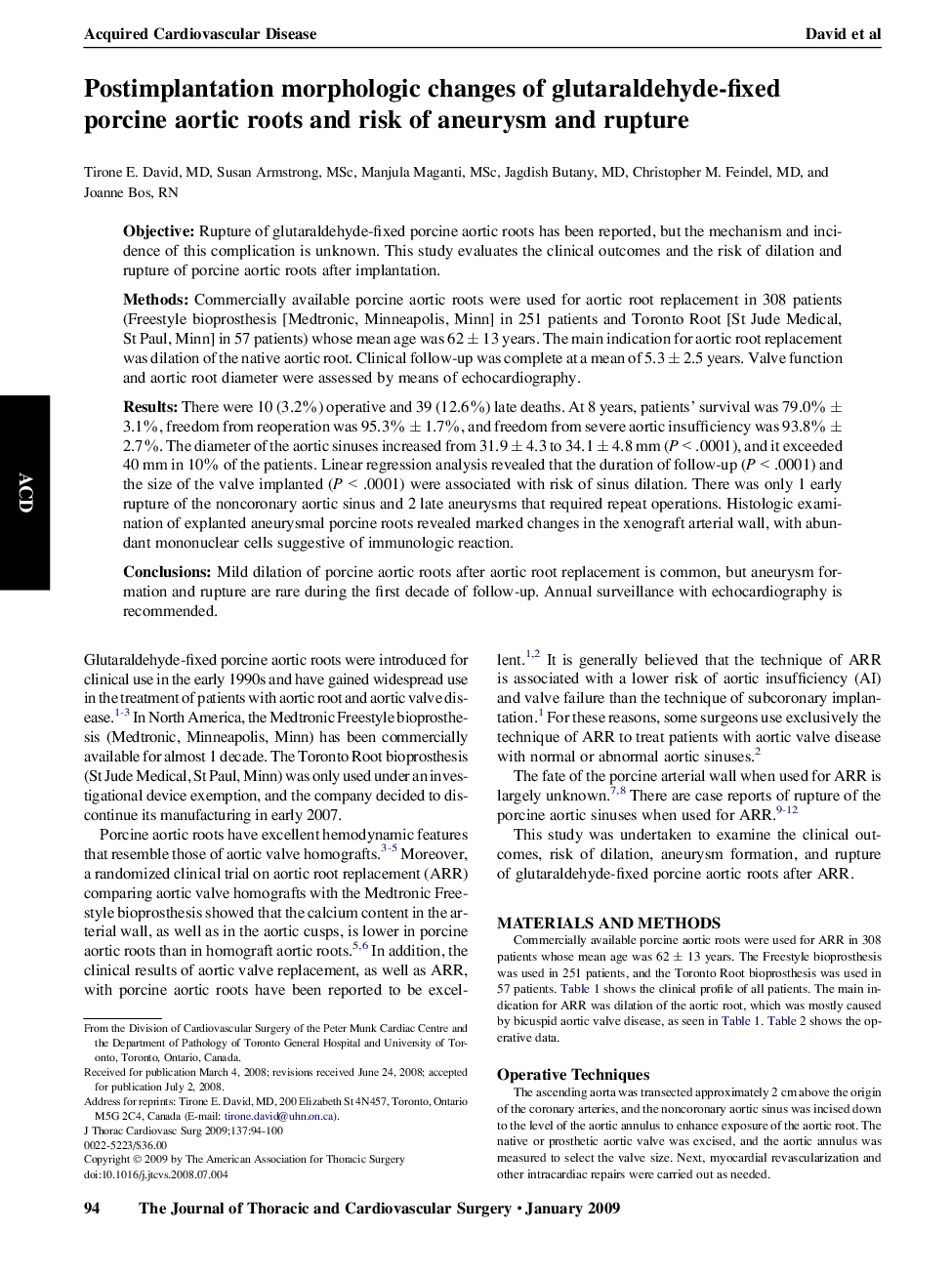| کد مقاله | کد نشریه | سال انتشار | مقاله انگلیسی | نسخه تمام متن |
|---|---|---|---|---|
| 2981995 | 1578678 | 2009 | 7 صفحه PDF | دانلود رایگان |

ObjectiveRupture of glutaraldehyde-fixed porcine aortic roots has been reported, but the mechanism and incidence of this complication is unknown. This study evaluates the clinical outcomes and the risk of dilation and rupture of porcine aortic roots after implantation.MethodsCommercially available porcine aortic roots were used for aortic root replacement in 308 patients (Freestyle bioprosthesis [Medtronic, Minneapolis, Minn] in 251 patients and Toronto Root [St Jude Medical, St Paul, Minn] in 57 patients) whose mean age was 62 ± 13 years. The main indication for aortic root replacement was dilation of the native aortic root. Clinical follow-up was complete at a mean of 5.3 ± 2.5 years. Valve function and aortic root diameter were assessed by means of echocardiography.ResultsThere were 10 (3.2%) operative and 39 (12.6%) late deaths. At 8 years, patients' survival was 79.0% ± 3.1%, freedom from reoperation was 95.3% ± 1.7%, and freedom from severe aortic insufficiency was 93.8% ± 2.7%. The diameter of the aortic sinuses increased from 31.9 ± 4.3 to 34.1 ± 4.8 mm (P < .0001), and it exceeded 40 mm in 10% of the patients. Linear regression analysis revealed that the duration of follow-up (P < .0001) and the size of the valve implanted (P < .0001) were associated with risk of sinus dilation. There was only 1 early rupture of the noncoronary aortic sinus and 2 late aneurysms that required repeat operations. Histologic examination of explanted aneurysmal porcine roots revealed marked changes in the xenograft arterial wall, with abundant mononuclear cells suggestive of immunologic reaction.ConclusionsMild dilation of porcine aortic roots after aortic root replacement is common, but aneurysm formation and rupture are rare during the first decade of follow-up. Annual surveillance with echocardiography is recommended.
Journal: The Journal of Thoracic and Cardiovascular Surgery - Volume 137, Issue 1, January 2009, Pages 94–100